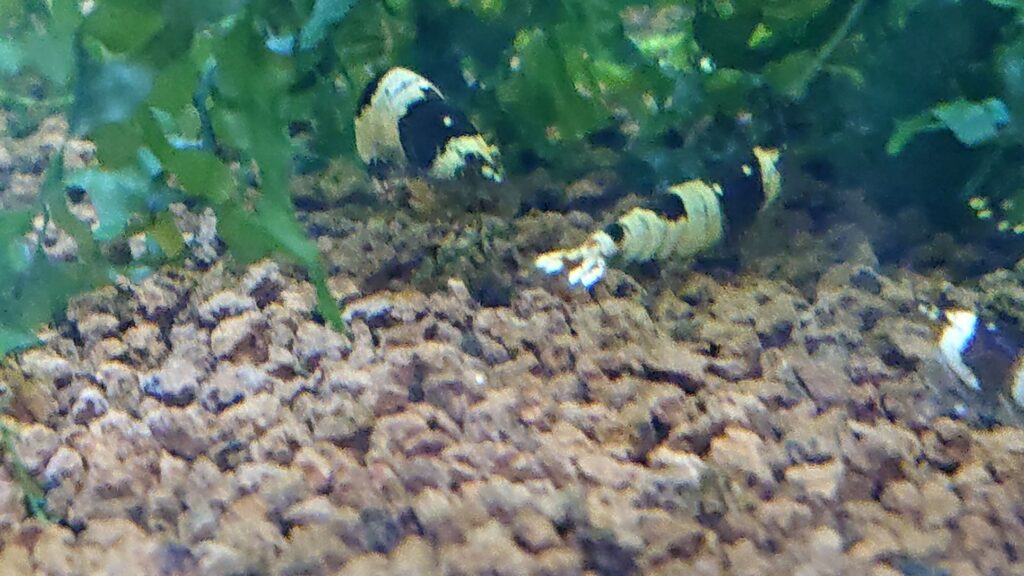Freshwater shrimps are fascinating invertebrates to watch, apart from adding aesthetic value to your aquarium. Their antics will keep you glued to your tank for hours. But have you wondered why your shrimp arching its back?
A freshwater shrimp is arching its back because of molting and egg fanning. However, some shrimps may bend their backs when cleaning their swimmerets as part of their grooming routine.
Arched backs in shrimps should not be a cause for alarm unless your shrimp remains motionless for hours. The rest of the article will discuss this topic in detail, so read on to understand why your shrimp is arching its back.
Why Freshwater Shrimps Arch Their Backs
Freshwater shrimps have intriguing behavior, and arching their backs is one of them. Your shrimp may bend its back during the molting process or when females are fanning eggs. Moreover, you might notice this scenario during your shrimp’s grooming routine.
Now, let’s take a detailed look at these reasons.

Molting Behavior
Freshwater shrimps have to undergo molting, which is the shedding of their exoskeleton, as part of their growth. The physiological process occurs in steps, and the rate depends on the shrimp’s developmental stage. Hence, shrimplets molt more often than adult shrimps.
Here are the four molting steps.
1. Pre-molting
Pre-molting is the stage when shrimps prepare for the next molting phase. A new skin (hypodermis) forms under the old exoskeleton. You’ll notice that the shrimp are eating less as it absorbs minerals from the exoskeleton.
Moreover, it will scratch its shell to weaken the old exoskeleton.
You might also start noticing the new shell, and the shrimp’s coloration may change. For instance, dwarf shrimps tend to have a muddy appearance at this stage.
2. Molting
Molting is the phase when the shrimp breaks off from the old exoskeleton.
Before that, your shrimp will start absorbing a lot of water until the older shell bursts. The breaking point is between the shrimp’s head and the armor of its abdomen. Many aquarists miss this fascinating stage, as the shrimp usually jumps off its old exoskeleton in a fraction of seconds.
Note: A shrimp arches its back as it tries to get out of the old exoskeleton. Watch how a Cherry shrimp sheds its exoskeleton in this video:
3. Post-Molting
After shedding its old shell, the shrimp starts recovering in about 12 to 36 hours for adults. At this point, shrimps tend to be vulnerable to predators, as the new exoskeleton is still soft.
Moreover, the shrimp’s body can’t function normally since it utilizes much energy during molting.
At this stage, the shrimp will absorb water to stretch its body and will produce chitin synthase, a substance that helps harden the new exoskeleton. Moreover, the shrimp will curl its legs, bend its back, and form a “U” to loosen the shell.
Sometimes, molting may take a toll on shrimps, and they’ll be inactive post-molting. So, you’ll notice that your shrimp lies on its side, curled up (U-shape). Moreover, absorption of too much water causes osmotic shock to the shrimp’s body.
However, a shrimp may not survive due to the stress and bursting of its cells.
4. Inter-Molting
Inter-molting is the stage when a shrimp has finished molting and forming a new exoskeleton. It’s the period between one molting phase and the next. The shrimp’s body will also start functioning maximally, so the shrimp will be very active and feed a lot to gain weight.
Fanning Eggs
Mature female shrimps are ready for breeding after molting and will release pheromones, which are sexual hormones, to attract males. Fertilization will take place after mating, and the females will carry the eggs under her abdomen until they hatch.
Now, pregnant (berried) females frequently “fan” their eggs using their swimming legs (pleopods) to provide them with oxygen. Hence, the shrimp may arch its back during this process.
Here’s a video of a berried Red Cherry shrimp fanning its eggs:
Grooming Routine
Apart from forming the “U shape” when loosening their old shells, some aquarists argue that their shrimps have arched their backs as part of their grooming routine. During this routine, they curl their legs and bend their backs as they’re cleaning their swimmerets.
In this case, they’ll be using their back legs to wipe their bodies.
Parting Shot
If you’ve been paying attention to your shrimps’ behavior, you might have seen them arching their backs at some point. Most shrimps do so during the molting process, while berried females may bend their backs when fanning their eggs. At times, they could simply be cleaning their swimmerets.
Therefore, it’s nothing to worry about unless your shrimp lies in a “U” for hours.
Helpful Resources
- Do Cherry Shrimp Need Sunlight
- What Are The Perfect Cherry Shrimp Water Parameters
- Is It Possible To Overfeed Cherry Shrimp?
Sources
- PetMed: 6 Things You Didn’t Know about Aquarium Shrimp
- Aquarium Breeder: Molting Process and Metabolism of the Dwarf Shrimp
- The Shrimp Farm: Breeding Red Cherry Shrimp
- Science Direct: Acetylation, crystalline and morphological properties of structural polysaccharide from shrimp exoskeleton
- YouTube: How a Shrimp Molts
- YouTube: Red Cherry Shrimp Laying Eggs
- Pet Shrimp Forum: Arched Backs
- Pet Shrimp Forum: Curling of the Body – What’s This Behavior About?
Recent Posts
How Do Freshwater Shrimps Live? Freshwater shrimp are fascinating creatures that play a crucial role in aquatic ecosystems. They help maintain water quality by consuming algae and decomposing...
How Many Freshwater Shrimp Per Gallon? 4 Key Factors Freshwater shrimp are popular additions to aquariums, but many hobbyists wonder: how many shrimp can comfortably live in a gallon of water? The...

